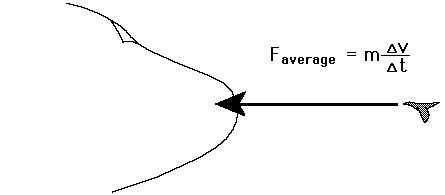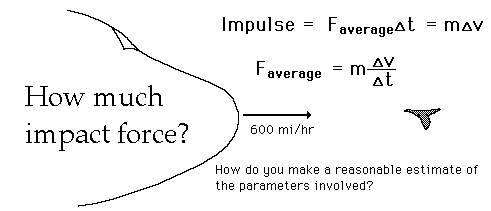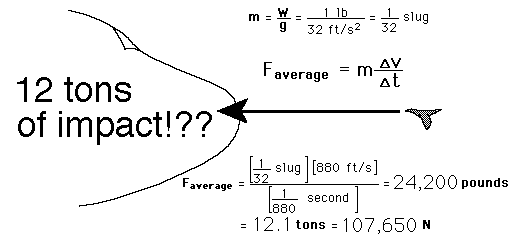Airplane & Duck Estimates
For the airplane and duck force estimate, the mass of the duck is determined, but the change in velocity and time of collision must be estimated in order to estimate the average impact force.
The change in
velocity of the
duck is estimated to
be 600 mi/hr = 880 ft/s by assuming a head on collision, assuming that the duck is riding with the airliner after the collision, and assuming that the duck's velocity is negligible compared to that of the
airliner, the
"hovering duck"
approximation.

The time of collision is assumed to be the time of transit of the duck's dimension of 1 foot, so 1/880 second.
|






